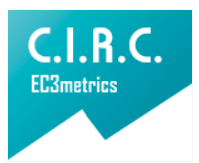Cervical Auscultation in Pediatric Patient with Cerebral Palsy : Narrative Review
Ausculta Cervical en el Paciente Pediátrico con Parálisis Cerebral: Revisión Narrativa Narrative Review
Main Article Content
In the clinical care, the speech language pathologist has evaluative resources to describe the sequential biomechanics of swallowing; one of the resources used is Cervical Auscultation (CA). Taking into account the description of the importance of the timely and effective intervention of the swallowing processes in children with cerebral palsy, it is considered necessary to solve: what is the spectrographic profile that records the pharyngeal phase of swallowing in the pediatric patient with cerebral palsyl?. The Systematic review based of a PRISMA methodology, specifically in the use of cervical auscultation as a reference for the clinical evaluation of swallowing and dysphagia in diagnosed pediatric subjects. with Cerebral Palsy. Of the180 articles found in the cientific databases, taking 6 articles out of the total according to the eligibility criteria, establishing a 3.34% of inclusion. In the absence of instrumental swallowing evaluation processes, CA provides the accessibility of the procedure as a benefit, in addition to temporality characteristics in the sequence of swallowing sounds, without any type of adverse factor for its performance. The CA is an important resource in clinical evaluation, it establishes a first step in the physiological analysis of swallowing with the physiological aspects of the pharyngeal phase. This puts auscultation in a privileged position, but it must be standardized by cientifics and theorists on the subject.
Downloads
Publication Facts
Reviewer profiles N/A
Author statements
Indexed in
- Academic society
- Bogotá: Corporación Universitaria Iberoamericana
- Publisher
- Bogotá: Corporación Universitaria Iberoamericana
Article Details
Almeida, S. T. d., Ferlin, E. L., Maciel, A. C., Fagondes, S. C., Callegari-Jacques, S. M., Fornari, F., de, de B., & Goldani, H. A. S. (2018). Acoustic signal of silent tracheal aspiration in children with oropharyngeal dysphagia. Logopedics Phoniatrics Vocology, 43(4), 169–174. https://doi.org/10.1080/14015439.2018.1487993
Arens, C., Herrmann, I. F., Rohrbach, S., Schwemmle, C., & Nawka, T. (2015). Position paper of the German Society of Oto-Rhino-Laryngology, Head and Neck Surgery and the German Society of Phoniatrics and Pediatric Audiology - current state of clinical and endoscopic diagnostics, evaluation, and therapy of swallowing disorders in c. Laryngo- Rhino- Otologie, 94, S306–S354. https://doi.org/10.1055/s-0035-1545298
Bacco, R, J. L., Araya C, F., Flores, G, E., & Peña, J, N. (2014). Trastornos de la alimentación y deglución en niños y jóvenes portadores de parálisis cerebral: abordaje multidisciplinario. Revista Médica Clínica Las Condes, 25(2), 330–342. https://doi.org/10.1016/s0716-8640(14)70044-6
D. Huiracocha, M. Tutiven, R., Sulbarán, R., Sofía, L. M., & Tutivén, H. (2015). REVISIÓN BLIBLIOGRÁFICA Literature Review 80.
Dudik, J. M., Kurosu, A., Coyle, J. L., & Sejdić, E. (2016). A statistical analysis of cervical auscultation signals from adults with unsafe airway protection. Journal of NeuroEngineering and Rehabilitation, 13(1), 1–10. https://doi.org/10.1186/s12984-015-0110-9
Frakking, T., Chang, A., O’Grady, K. A., David, M., & Weir, K. (2017). Reliability for detecting oropharyngeal aspiration in children using cervical auscultation. International Journal of Speech-Language Pathology, 19(6), 569–577. https://doi.org/10.1080/17549507.2016.1222452
Frakking, T., Chang, A., O’Grady, K. A., Yang, J., David, M., & Weir, K. (2017). Acoustic and Perceptual Profiles of Swallowing Sounds in Children: Normative Data for 4–36 Months from a Cross-Sectional Study Cohort. Dysphagia, 32(2), 261–270. https://doi.org/10.1007/s00455-016-9755-1
Frakking, T., Chang, A., O’Grady, K., David, M., & Weir, K. (2016). Aspirating and Nonaspirating Swallow Sounds in Children: A Pilot Study. Annals of Otology, Rhinology and Laryngology, 125(12), 1001–1009. https://doi.org/10.1177/0003489416669953
Furkim, A. M., Duarte, S. T., Sacco, A. de F. B., & Sória, F. S. (2009). O uso da ausculta cervical na inferência de aspiração traqueal em crianças com paralisia cerebral. Revista CEFAC, 11(4), 624–629. https://doi.org/10.1590/s1516-18462009000800011
Huiracocha, M., Rojas, R., & Huiracocha, M. (2015). Auscultación cervical: alternativa no invasiva en el diagnóstico de disfagia en niños con problemas de neurodesarrollo. Revista de La Facultad de Ciencias Médicas de La Universidad de Cuenca, 33(2), 80–88. http://dspace.ucuenca.edu.ec/handle/123456789/25081
Lagarde, M., Kamalski, D., & Engel-Hoek, L. (2016). The reliability and validity of cervical auscultation in the diagnosis of dysphagia: A systematic review. Clinical Rehabilitation, 30(2), 199–207. https://doi.org/10.1177/0269215515576779
Lagarde, M. L. J., Kamalski, D. M. A., & Van Den Engel-Hoek, L. E. N. I. E. (2016). The reliability and validity of cervical auscultation in the diagnosis of dysphagia: A systematic review. Clinical Rehabilitation, 30(2), 199–207. https://doi.org/10.1177/0269215515576779
National Institute of Neurological Disorders and Stroke. (n.d.). Trastornos de la deglución | NINDS Español. Trastornos de La Deglución. Retrieved June 2, 2021, from https://espanol.ninds.nih.gov/es/trastornos/trastornos-de-la-deglucion
Nozue, S., Ihara, Y., Takahashi, K., Harada, Y., Takei, Y., Yuasa, K., & Yokoyama, K. (2017). Accuracy of cervical auscultation in detecting the presence of material in the airway. Clinical and Experimental Dental Research, 3(6), 209–214. https://doi.org/10.1002/cre2.89
Organizacion Mundial de la Salud. (2015). Discapacidad y Salud. Discapacidad y Salud. https://www.who.int/es/news-room/fact-sheets/detail/disability-and-health
Otapowicz, D., Sobaniec, W., Okurowska-Zawada, B., Artemowicz, B., Sendrowski, K., Kułak, W., Boćkowski, L., & Kuzia-Šmigielska, J. (2010). Dysphagia in children with infantile cerebral palsy. Advances in Medical Sciences, 55(2), 222–227. https://doi.org/10.2478/v10039-010-0034-3
Pan, Q., Maeda, N., Manda, Y., Kodama, N., & Minagi, S. (2016). Validation of the optimal site in the neck region for detecting swallowing sounds. Journal of Oral Rehabilitation, 43(11), 840–846. https://doi.org/10.1111/joor.12440
Salghetti, A., & Martinuzzi, A. (2012). Dysphagia in cerebral palsy. Eastern Journal of Medicine, 17(4), 188–193.
Taboada, N. L. . K. Q.-E. . M. C.-C. . K. G.-T. . J. M. I. . S. C.-U. . E. D. (2013). Revista Peruana de Epidemiología. In Revista Peruana de Epidemiología (Vol. 17, Issue 2). http://www.redalyc.org/articulo.oa?id=203129458006
Vargas García, M. A. (2019). Perfil espectrográfico de la deglución normal en el adulto. Nutrición Hospitalaria, 36(2), 412–419. https://doi.org/10.20960/nh.2173
Vázquez Vela, C. C., & Vidal Ruiz, C. A. (2014). Parálisis cerebral infantil: definición y clasificación a través de la historia. Revista Mexicana de ORTOPEDIA PEDIÁTRICA, 16(1), 6–10. https://www.medigraphic.com/cgi-bin/new/resumen.cgi?IDARTICULO=52957%0Ahttp://www.medigraphic.com/opediatria

















